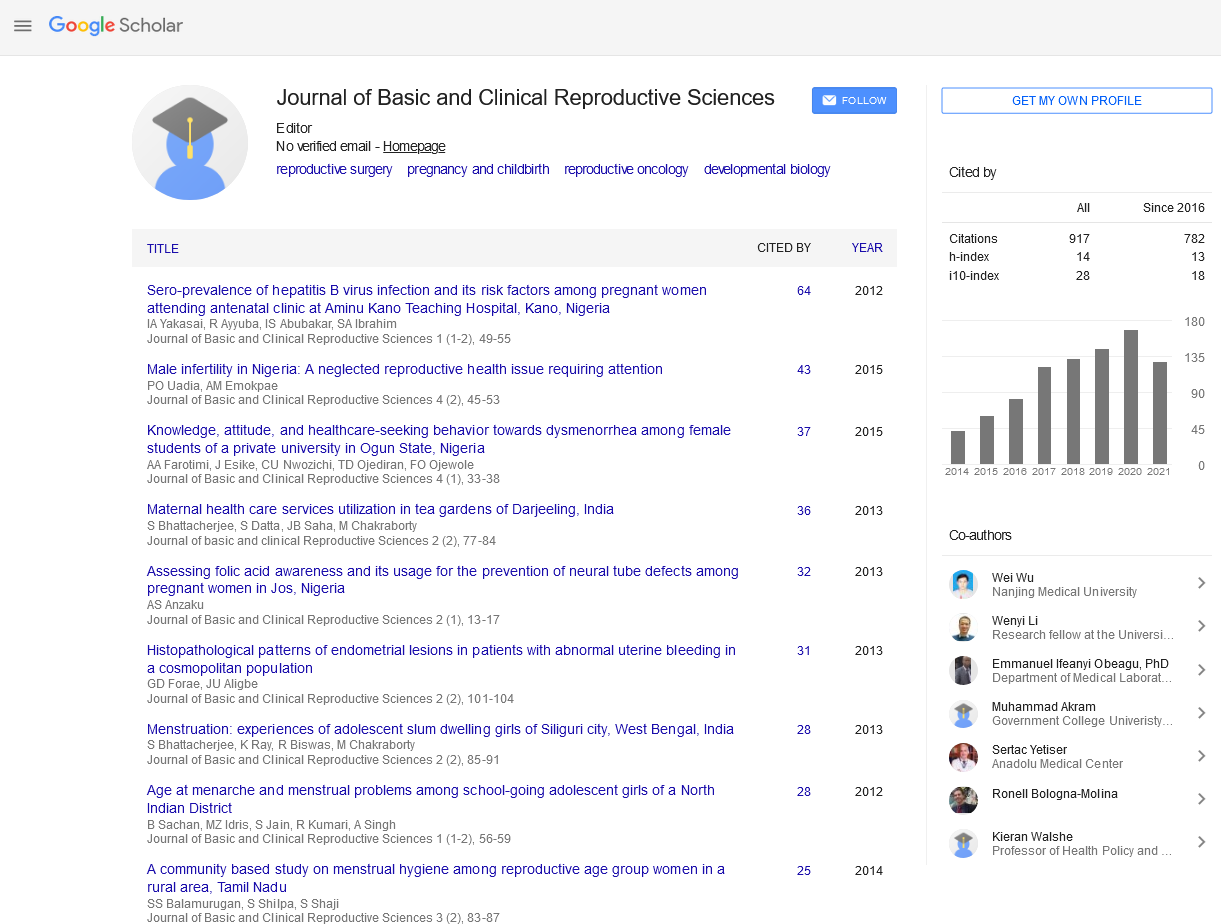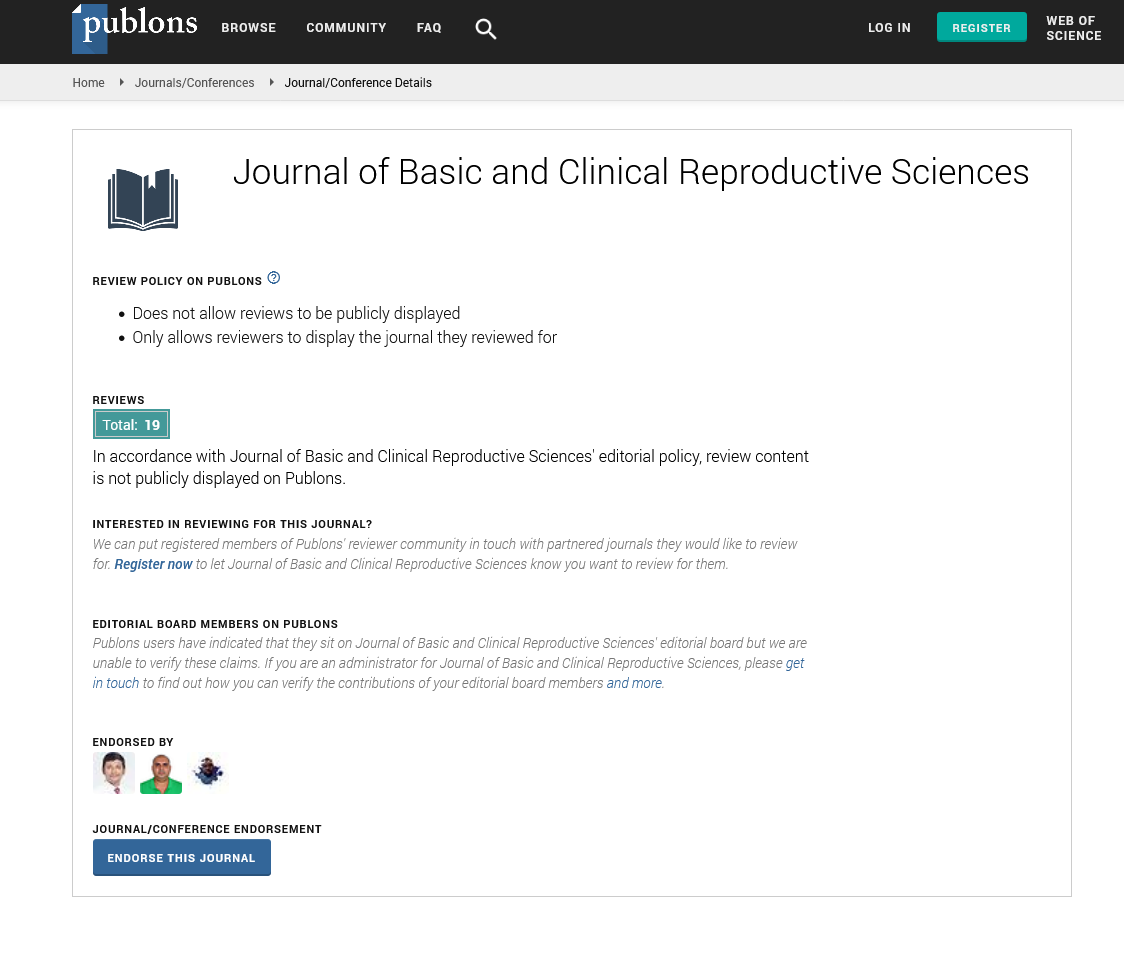Perspective - Journal of Basic and Clinical Reproductive Sciences (2023) Volume 12, Issue 5
Amniotic Fluid Biomarkers in the Diagnosis and Monitoring of Fetal Abnormalities
Received: 25-Sep-2023, Manuscript No. JBCRS-23-121567 ; Editor assigned: 27-Sep-2023, Pre QC No. JBCRS-23-121567 (PQ); Reviewed: 11-Oct-2023 QC No. JBCRS-23-121567 ; Revised: 18-Oct-2023, Manuscript No. JBCRS-23-121567 (R); Published: 25-Oct-2023
This open-access article is distributed under the terms of the Creative Commons Attribution Non-Commercial License (CC BY-NC) (http://creativecommons.org/licenses/by-nc/4.0/), which permits reuse, distribution and reproduction of the article, provided that the original work is properly cited and the reuse is restricted to noncommercial purposes. For commercial reuse, contact reprints@pulsus.com
Description
Amniotic fluid, often referred to as the “waters,” is a remarkable elixir that envelops and nurtures the developing fetus within the amniotic sac. The genesis of amniotic fluid is a process intricately woven into fetal development. This section elucidates how amniotic fluid originates from maternal plasma and fetal contributions, including urine production, lung secretions, and skin exfoliation. Furthermore, it delves into the diverse constituents of amniotic fluid, ranging from electrolytes and proteins to fetal cells, all crucial for the well-being and growth of the developing fetus. Maintaining an optimal volume of amniotic fluid is essential for fetal protection and development. This section explores the delicate balance between amniotic fluid production and clearance, orchestrated by fetal and maternal factors. The role of the placenta, fetal swallowing, and the intricate regulation of fluid dynamics within the amniotic cavity are key aspects discussed in understanding the dynamic equilibrium of amniotic fluid volume. Beyond its role as a protective cushion for the developing fetus, amniotic fluid performs a myriad of functions. This section investigates its contributions to fetal temperature regulation, musculoskeletal development, and the facilitation of fetal movements. Additionally, it explores the involvement of amniotic fluid in the development of fetal organs, including the lungs and digestive system, underscoring its pivotal role in shaping fetal well-being. Amniotic fluid is a treasure trove of information for clinicians, offering valuable insights into fetal health. This section delves into the diagnostic significance of amniotic fluid analysis, exploring techniques such as amniocentesis and the information they provide about genetic abnormalities, chromosomal disorders, and fetal lung maturity. Understanding the diagnostic potential of amniotic fluid contributes to improved prenatal care and informed decision-making.
Complications and clinical implications
Disruptions in the balance and composition of amniotic fluid can lead to various complications during pregnancy. This section investigates conditions such as oligohydramnios and polyhydramnios, exploring their causes, implications for fetal health, and potential management strategies. By understanding these complications, healthcare professionals can implement targeted interventions to optimize pregnancy outcomes. The interactions between amniotic fluid and the developing fetus extend beyond physical protection. This section explores the potential signalling functions of amniotic fluid, including its role in immunomodulation and the development of the fetal immune system. The reciprocal relationship between amniotic fluid and fetal development highlights the intricacies of the fetal-maternal interface. Despite significant strides in understanding amniotic fluid, numerous avenues for research remain unexplored. This section discusses emerging research frontiers, including the exploration of exosomal content in amniotic fluid, the potential for amniotic fluid as a source of stem cells, and novel diagnostic approaches. These future directions hold promise for expanding our understanding of amniotic fluid and its implications for maternal and fetal health.
Conclusion
In conclusion, amniotic fluid, a fluidic symphony of life, plays a central role in fetal development and maternal well-being. This research article has navigated through the formation, composition, regulation, functions, diagnostic significance, and clinical implications of amniotic fluid. By unravelling the intricacies of this remarkable substance, we contribute to a deeper understanding of prenatal health and open doors to innovative approaches for improving maternal and fetal outcomes. As research continues to unveil the mysteries of amniotic fluid, its significance in the tapestry of human life becomes increasingly profound.


